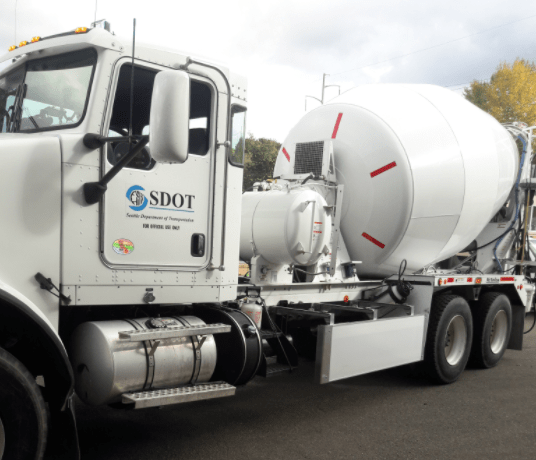Large trucks pose a disproportionate threat to people walking and biking. With their large blind spots, clunky steering, and terrific force, heavy trucks are involved in a far greater percentage of pedestrian and cyclist fatalities than their share of overall traffic mileage.
Many aspects of freight movement could be reformed to reduce exposure to dangerous trucks, but there's one simple piece of equipment that can save lives immediately: side guards. Side guards prevent people from being run over by the rear wheels of trucks, and they are mandatory in several countries in South America, Europe, and Asia. But not in the U.S.
The federal government treats side guards as a voluntary safety measure, and American cities are just beginning to use their leverage to spread adoption. New York City has started to equip city-owned trucks with side guards, and Boston is taking the further step of requiring them on trucks operated by city contractors.
Now Seattle DOT is getting in on the act, Tom Fucoloro at Seattle Bike Blog reports:
By attaching a guard that runs along any gaps in the side of the truck or trailer body, anyone hit has a better chance of being pushed out of the way of the following wheels. The impact can still be bad, of course, but the odds of survival are much higher. A study in the UK found that such side guards reduced fatalities by 61 percent for people biking and 20 percent for people walking, according to USDOT.
SDOT needs to get its own house in order. And they are. The department has started installing side guards on its fleet of trucks. And what’s even better: The guards are manufactured right here at Allied Body near South Park under the company’s new side guard brand Walker Blocker. A local business making safety devices for local freight, I love it.
And for any business owners of managers worried about the cost of the side guards, the safety benefits alone definitely make it worth it. But trucks with side guards also get a 4–7 percent boost in gas mileage. For big trucks, that much fuel adds up fast.
There’s good data behind the benefits of side guards, and now the guards are easily accessible locally. It’s time for the city to pursue rules requiring side guards, at least for companies that contract with the city. But regardless of rules, every company should be looking to get ahead of the game and add them on their own.
More recommended reading today: Greater Greater Washington explains why the GOP tax bill is bad news for cities. Pricetags writes that the Toronto parking enforcement officer who shamed bike lane blockers on social media has been told to keep quiet. And Spacing considers how Sidewalk Labs' $50 million urban design experiment in Toronto could go wrong.






